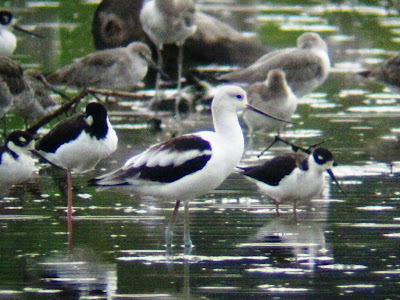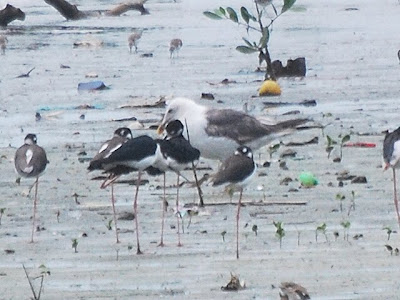Elegant Tern at Veracruz, a report by Jan Axel Cubilla

This morning (september 27th) I saw an Elegant Tern at the easternmost end of playa Veracruz (by the river). It was alone and stayed only 10 minutes, resting close to a flock of Whimbrels and Willets. Then it flew directly to the sea. Later, I found two American Oystercatchers at Farfan, by the bridge between the former beach and the entrance to Palo Seco Hospital. They were not close to the road, I had to walk a lot through the beach (with rubber boots) in order to find them feeding in a rocky shore. It seems that this is a regular site, since I saw also a pair there during the last Pacific Christmas Bird Count (curiously, I also saw an Elegant Tern in Veracruz during the last Pacific CBC).








